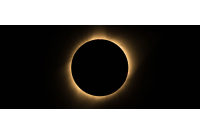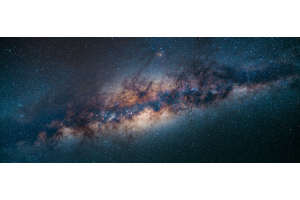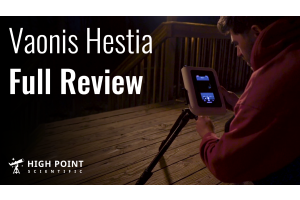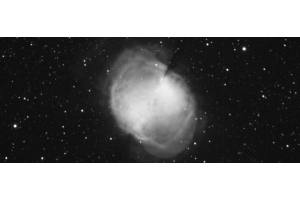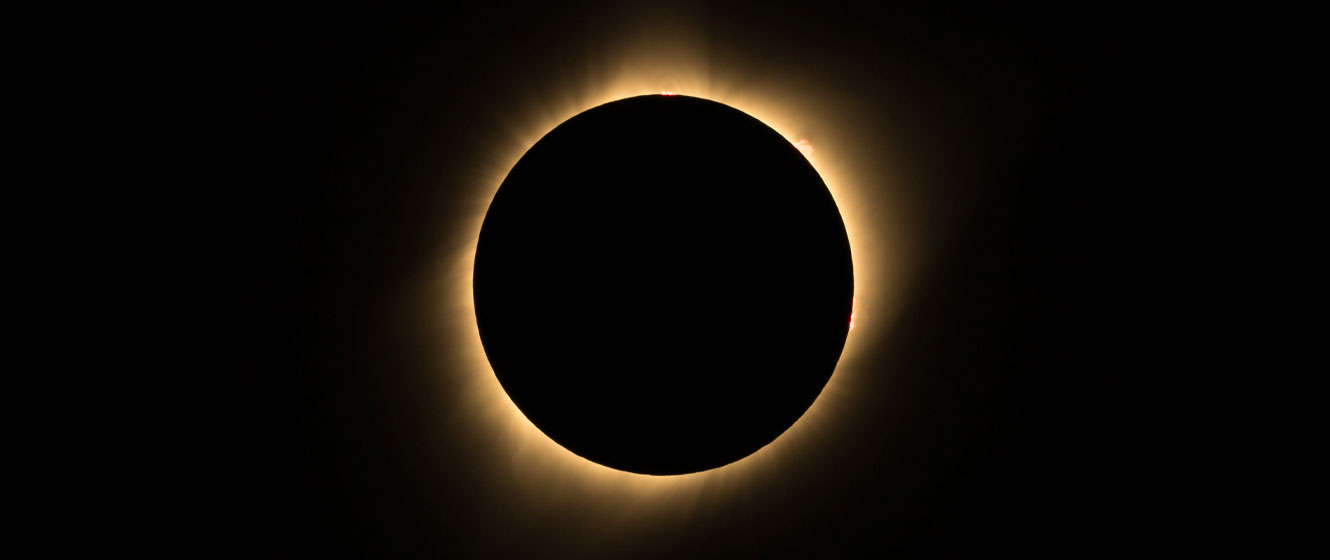
Few things in astronomy - or in nature itself - rival the wonder and spectacle of a total solar eclipse. It’s an event that’s instilled awe and fear among people around the world for thousands of years, and it’s a sight that, once seen, can never be forgotten. Those who experience it will often seek it again, anxious to relive the fleeting moments of totality that bring darkness to a previously sunlit world.
What is a Solar Eclipse?
Put simply, a solar eclipse occurs when the Moon passes between the Earth and the Sun, causing the Sun to be obscured by the Moon in the process. We live at a fortunate time in the Earth’s history; the Moon is roughly 400 times smaller than the Sun, but is also 400 times closer. As a result, the Moon appears the same size as the Sun in the sky.
(In case you’re curious, both the Sun and the Moon appear approximately half a degree in size. For reference, there are 90 degrees from the horizon to the zenith, the point directly above your head.)
Since the Moon has to pass directly between the Earth and the Sun, a solar eclipse can only occur at the new Moon. A new Moon occurs roughly once a month - so why don’t we see an eclipse with every new Moon?
The Moon’s orbit is tilted slightly, so there are months when the Sun, Moon, and Earth don’t perfectly align. Since the Moon’s orbit is also elliptical, there are times when it’s a little too far from the Earth and it doesn’t cover the Sun completely. In order for a total solar eclipse to take place, the Sun, Moon, and Earth must be in alignment and the Moon must be close enough to cover the entire Sun.
Not everyone on Earth will see the eclipse as it’s happening. Of course, half the world is in darkness when the Moon turns new. It could be the middle of the night for anyone on that side of the Earth, and the Sun would be well below the horizon.
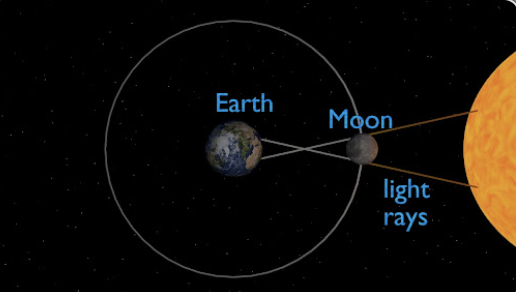
Unfortunately, not everyone on the daylit side will see an eclipse either. As the Moon passes between the Earth and the Sun, it casts a very narrow shadow upon the Earth’s surface. Anyone living within the path of the shadow will see a total solar eclipse, whereas those living to the north or south of the path could see a partial eclipse instead.
At most, when the Moon is closest to the Earth, the path can be 267 km (166 miles) wide. Similarly, the closer the Moon is to the Earth, the longer the eclipse. This is because the Moon will appear slightly larger in our sky and will therefore take longer to pass in front of the Sun.
The longest eclipses can have a period of totality lasting seven and a half minutes, whereas the shortest eclipses can last mere seconds. On average, you can expect to experience totality for between two and four minutes, depending upon the circumstances of the eclipse itself.
What Are the Different Types of Solar Eclipse?
A total solar eclipse will take place about once every 18 months, but there are other, albeit less spectacular, eclipses that occur more frequently. A partial solar eclipse occurs when the Moon only covers a fraction of the Sun’s disc. This can happen because the Sun, Moon, and Earth aren’t in precise alignment at that time, or simply because a total solar eclipse isn’t visible from your location.
An annular eclipse occurs when the Moon is a little further away and appears smaller than the Sun in the sky. In that situation, it won’t completely cover the Sun’s disc and observers see a ring of light instead. It’s not unusual for annular eclipses to occur once a year, but occasionally the gap will be longer or shorter, with six or eighteen months between eclipses.
Lastly, a hybrid eclipse is a combination of a total and annular eclipse. Some observers would see a total solar eclipse, while others would see an annular eclipse. It depends upon which part of the Moon’s shadow the observer is in.
The Moon’s umbra is the inner, central portion of the shadow and is the darkest part. Observers within the umbra would see a total solar eclipse. The Moon’s penumbra is the outer portion of the Moon’s shadow and is the lightest. Anyone within the penumbra would see a partial eclipse.
There’s a third part of the Moon’s shadow, called the antumbra, that extends beyond the umbra. To an observer within the antumbra, the Sun appears a little larger than the Moon and they will see an annular eclipse.
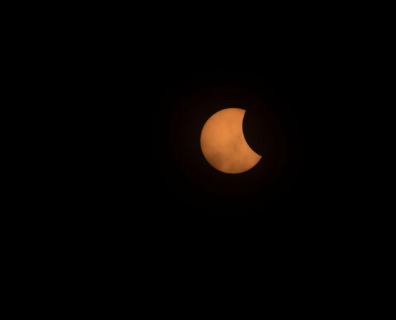
What Happens During an Eclipse?
If you’re lucky enough to experience a total solar eclipse, you’ll notice several distinct phases. The partial phase is first. This is when the Moon slowly moves across the face of the Sun and partially obscures it. As it moves, more and more of the Sun’s surface disappears from view.
First contact occurs when the edge of the Moon first touches the edge of the Sun and the partial phase begins. The time from first contact to the start of totality (known as second contact) is typically about an hour and a quarter.
For most of that time, you may not notice any change at all. It’s not until most of the Sun’s disc has been covered that you’ll notice that your surroundings are a little darker. You might also notice crescent-shaped shadows beneath trees. This occurs when the partially covered Sun shines through the translucent leaves; the leaves act as a pinhole camera and project an image of the Sun onto the ground.
As the light fades, you might also notice that colors lose their contrast - the effect is similar to what you see when wearing sunglasses on a normal, sunny day.
The Moments of Totality
With only a minute or less to go, you could see a number of fleeting events before totality. For example, you might notice a phenomenon known as shadow bands. These thin, wavy alternating lines of light and dark can be seen moving across the ground and are caused by the Earth’s atmosphere refracting the last of the Sun’s light.
You might also notice the shadow of the Moon rapidly approaching your location. As the shadow races toward you, you’ll also notice the shadow moving across the sky above your head, like a blanket being thrown over you.
If you’re standing on the summit of a large hill or mountain, you may be in for an additional treat. Anyone able to see the surrounding landscape from a reasonable altitude could also see the large, dark shadow of the Moon rapidly rushing across the Earth’s surface until they’re engulfed in darkness.
With only about fifteen or twenty seconds remaining, you’ll start to see a white, ghostly fire surrounding the blackened disc of the Sun - the corona. This is the outermost portion of the Sun’s atmosphere and it extends millions of kilometers out into space.
Next, you’ll see an effect known as the “diamond ring.” At this point, almost the entire surface of the Sun is covered by the Moon, but a tiny, but brilliant, spark of sunlight will still be visible before it’s snuffed out by the lunar disc.
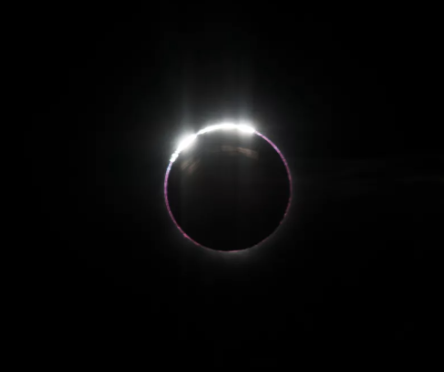
This spark looks like a diamond, with the Sun’s corona forming the ring itself.
Mere seconds before totality and the diamond disappears to be replaced with Baily’s beads. These occur when tiny beads of sunlight shine through the gaps in the Moon’s uneven, rugged landscape.
At last, we come to totality and second contact. The sky has darkened. The temperature, lacking the warmth of the Sun, has dropped by up to ten degrees and a slight breeze may be blowing. Birds and animals are silent, fooled into thinking that night has fallen.
In the sky above, the scene echoes the twilight before the sunrise or following the sunset. The brightest stars and planets now shine. Mercury and Venus, closest to the Sun, are frequently visible.
Now’s the time to savor the moment, as mere minutes later, it will all be over. Third contact brings the end of totality and the events reverse as the eclipse unravels. Bailey’s beads disappear to be replaced with a new diamond ring. The solar corona vanishes as the Moon moves away and the stars and planets fade as the sky brightens.
Your surroundings brighten too, the Sun’s light strengthening as more of its disc is revealed. The Moon’s shadow has raced past and is hurtling onwards to other observers. It’ll be another hour or so before fourth contact, when the Moon has entirely uncovered the Sun’s disc. At that time the eclipse will be officially over, and the magic will have long gone.
With total solar eclipses ranking among the rarest, and most amazing, of astronomical events, it’s no exaggeration to describe them as once-in-a-lifetime opportunities. There’s simply nothing on Earth that can compare with it, and it’s little wonder that some will devote so much time, energy, and money to experiencing those precious moments again.
Science may explain the mechanics and predict, with clockwork precision, the dates, times, and locations of each eclipse, but the experience itself is indefinable.
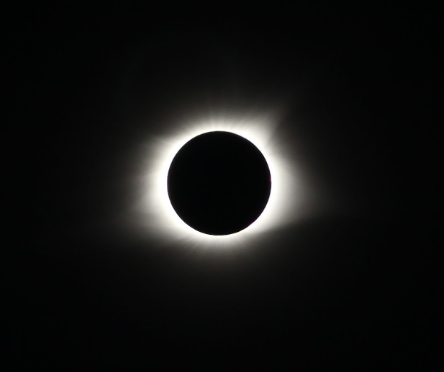

Learn More
Interested in learning more about what's going on in the sky? Not sure where to begin? Check out our Astronomy Hub to learn more!

